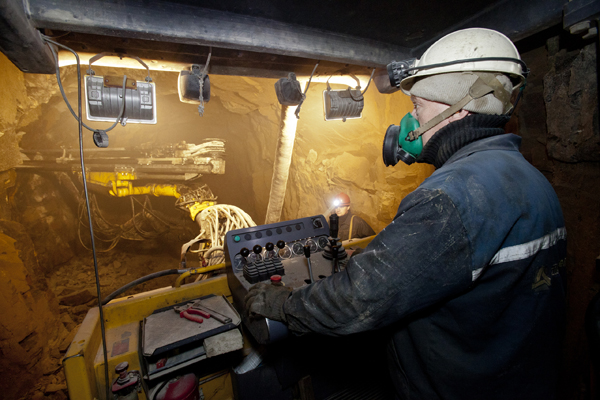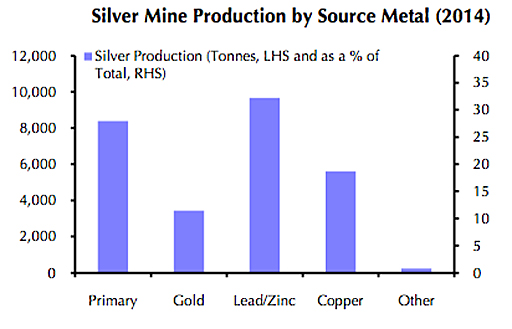
Polymetal’s Dukat complex in northeastern Russia – 2014 production of 24m oz silver. Image: Polymetal
Silver futures trended weaker on Wednesday with September contracts down slightly to exchange hands at $14.55 an ounce in afternoon trade.
Like gold, silver went off to the races at the start of the year to hit a 2015 high of $18.36 on January 22 before falling back to trade down 7% for the year. The precious metal is 28% below the level it was trading at a year ago.
A new report by Capital Economics sees a brighter outlook for silver in the second half and out to 2017. The independent research house says one of the primary reasons for the anticipated higher silver price is the nature of silver mine supply.
While the market has been in oversupply in recent years, less than a third of global output comes from primary silver mines – the remainder is produced as a by-product in mines which target copper, gold, zinc, and lead.
Capital Economics expects the decline in gold and industrial metals prices (copper was trading barely above six-year lows on Wednesday and zinc’s 2015 rally has evaporated) and subsequent capex cuts will therefore hasten the decline in silver supply:
“About 35% of silver comes from lead and zinc mines. While the zinc price is up 10% since July 2012, the lead market has been plagued by years of negative performance prompting production to fall by 6% in 2014. What’s more, zinc’s positive price performance has been driven by mine closures that have removed about 1 million tonnes of supply since 2013.
“While efforts are being made to restart some idled mines and to expand existing mining projects, there is limited investment going into new mine capacity. As a result, silver as a by-product could start to dry up soon, leading to a much sharper slowdown in output than we had originally anticipated.”

Source: Capital Economics, Thomson Datastream, Bloomberg, GFMS, WSTS, Companies’ websites
At the same time output from the top 15 primary silver mines have also fallen back and is down 3% during the first half of the year. Production from Mexico and Peru, responsible for 36% of the global total declined 7% year on year in May.
Capital Economics anticipates mine supply to be no better than flat in 2015 and the market – thanks in part to strong investment demand – to return to a deficit in 2015. The house view is a year-end silver price of $16.50 per ounce and a longer term move back to $22 thanks to a rebound in electronics demand.

Source: Capital Economics, Thomson Datastream, Bloomberg, GFMS, WSTS, Companies’ websites
4 Comments
rayban
Thanks . Never thought of it that way .
Anopheles
Yet still only half the annual silver production is used by industry. The remainder is simply stored in vaults as jewelry or bars.
The price decline in silver will also mean that the desire to store bars/coins will also diminish, and that will easily make up the lost production.
Majestic Coins LTD
I found the source metal angle fascinating Lost me at the “rebound in electronics” I think solar is using silver. Depends on how that industry unfolds. Note: US engineering developed incorporating gold with silver into a more efficient solar panel.
laid back dude
HUGE PROBLEM. Graphene powder is cheap on ebay straight from the factory and can be put inside ink cartridges then print out with ink jet printer for homemade circuit boards. Silver market is small. Graphene does replace EVERYTHING about silver but the electronics part it sure does. Nano wire Graphene is much better than powder for making Circuit boards. I would not sell silver now but in a couple years when we start seeing graphene products hit the shelves i would hedge against silver, Garnet Gemstone can be cut into CD like discs and information written and read at -320c so its a future space travel material for moon bases and such. Invest in a gold pan for $8 on ebay , a shovel and go too your local creek, may be surprisingly profitable because you never know what you can find in the black sand its a mix of metals. Bands of Haematite on beaches tend too have Silver and gold in them and are easy too find.